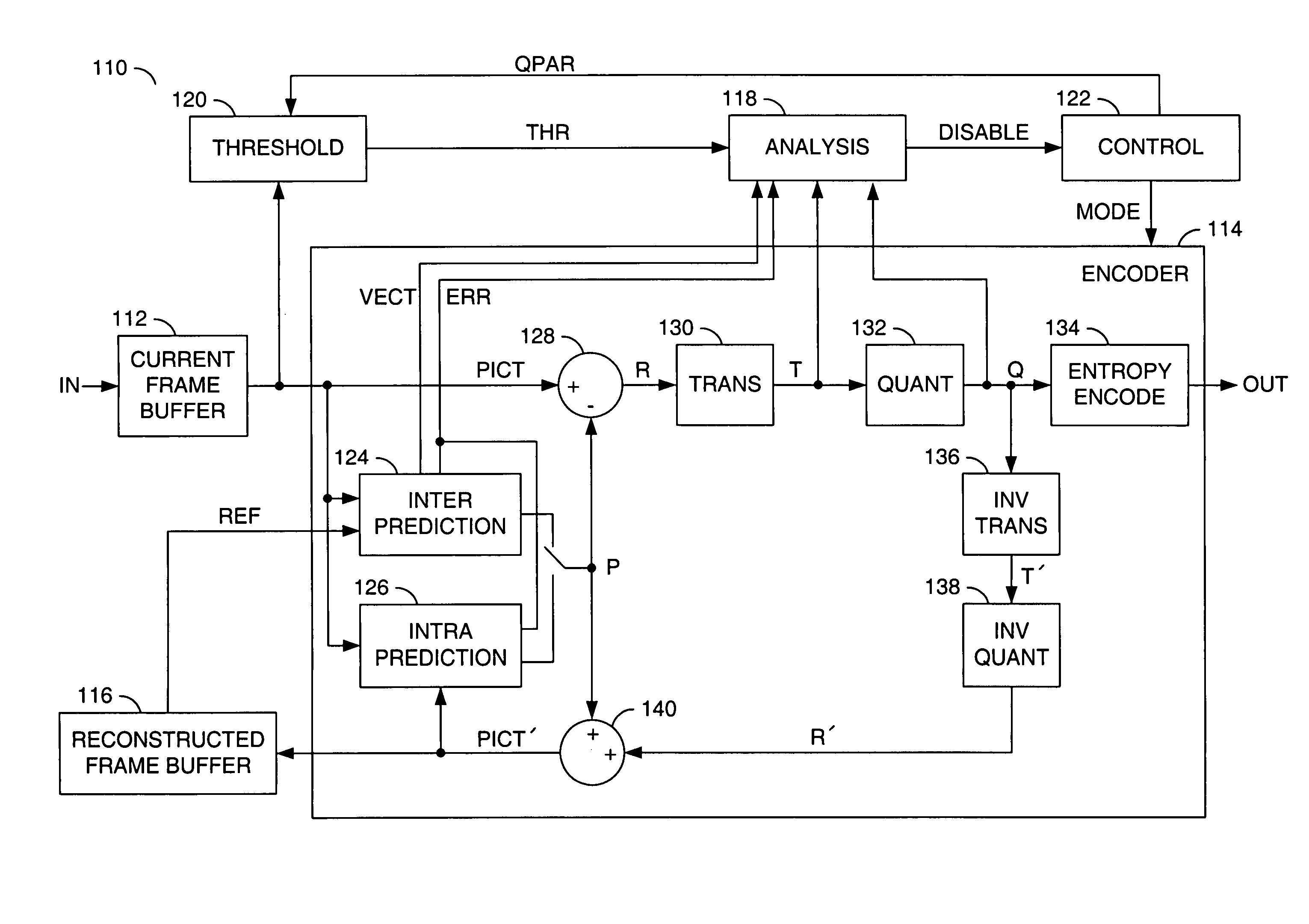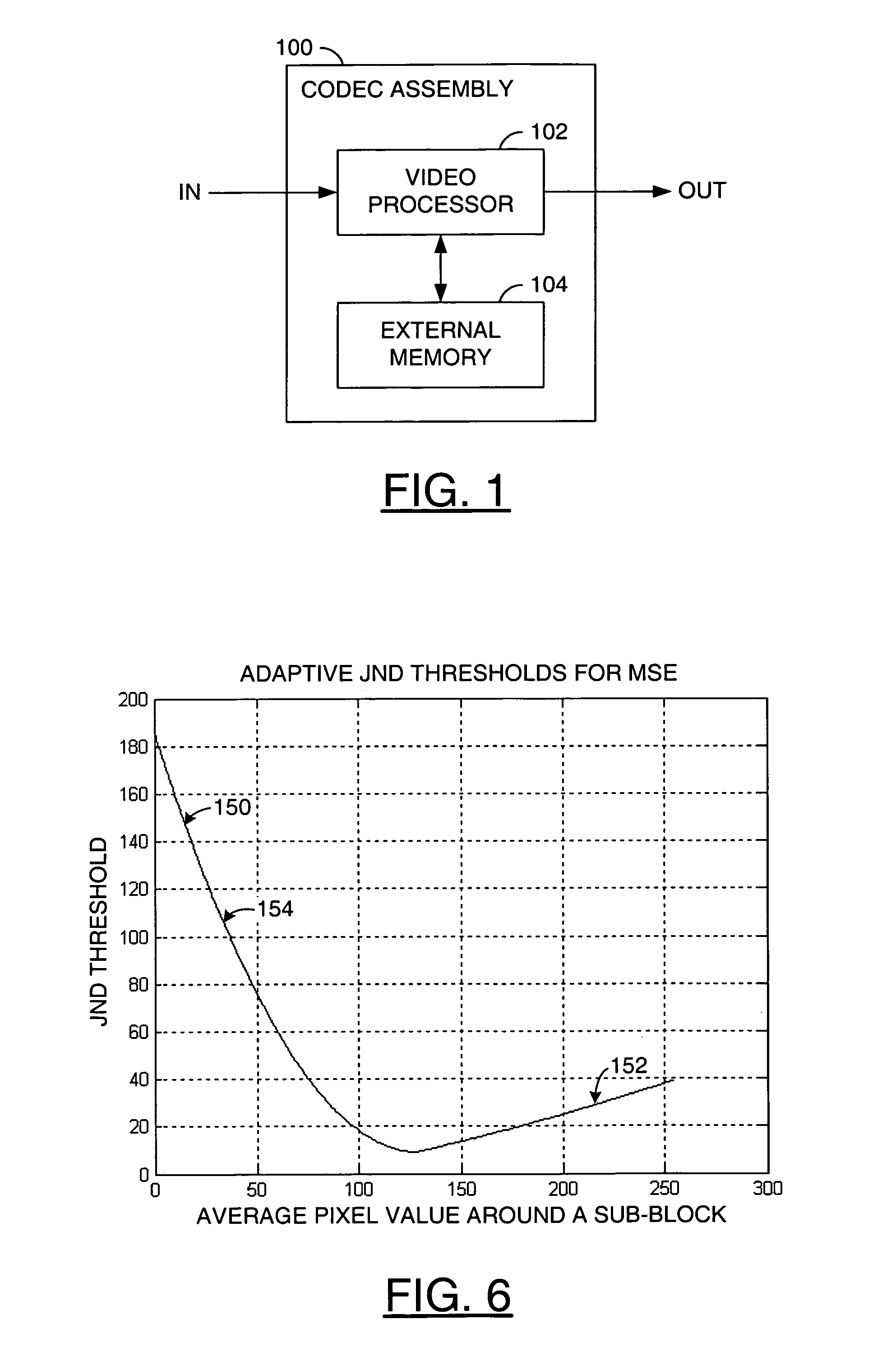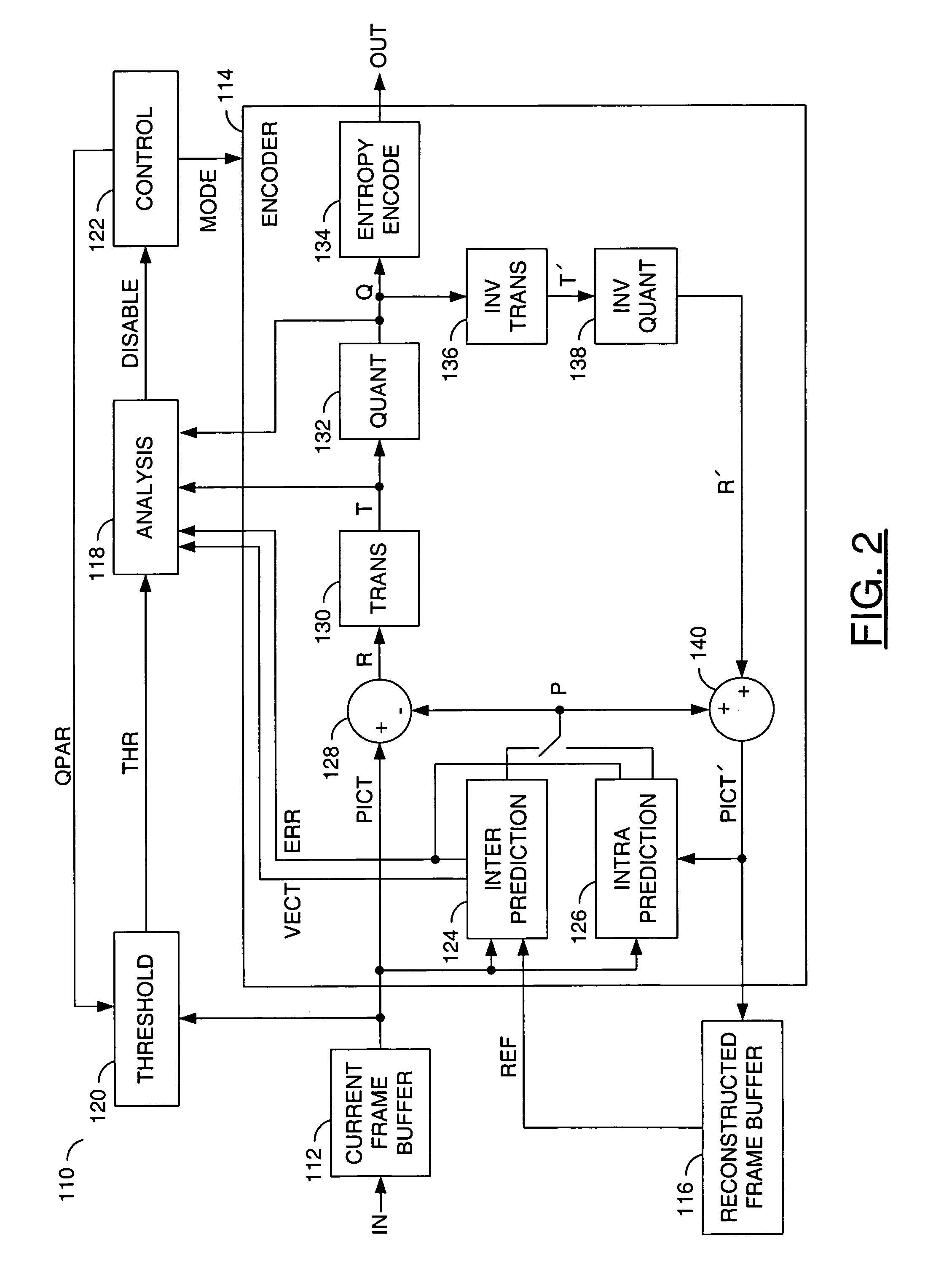Methods and/or apparatus for controlling zero-residual coding in predictive image/video coding
- Summary
- Abstract
- Description
- Claims
- Application Information
AI Technical Summary
Benefits of technology
Problems solved by technology
Method used
Image
Examples
Embodiment Construction
[0018]Referring to FIG. 1, a block diagram of an apparatus 100 is shown in accordance with a preferred embodiment of the present invention. The apparatus (or system) 100 may be referred to as a encode / decode (CODEC) apparatus. The CODEC apparatus 100 may be operational to control zero-residual coding of a stream of pictures in a video signal by predicting one or more artifacts in cases when a zero-residual mode is considered. The prediction (or forecast) of the artifacts for each of multiple blocks in the pictures is generally based on evaluating the prediction errors of small sub-blocks within each block. If coding any individual sub-block in a zero-residual coding mode would generate the artifacts, the zero-residual coding mode may be disallowed for the entire 16×16 block (macroblock).
[0019]The CODEC apparatus 100 generally comprises a circuit (or module) 102 and a circuit (or module) 104. A bidirectional communication link may connect the circuit 102 and the circuit 104. An input...
PUM
 Login to View More
Login to View More Abstract
Description
Claims
Application Information
 Login to View More
Login to View More - R&D
- Intellectual Property
- Life Sciences
- Materials
- Tech Scout
- Unparalleled Data Quality
- Higher Quality Content
- 60% Fewer Hallucinations
Browse by: Latest US Patents, China's latest patents, Technical Efficacy Thesaurus, Application Domain, Technology Topic, Popular Technical Reports.
© 2025 PatSnap. All rights reserved.Legal|Privacy policy|Modern Slavery Act Transparency Statement|Sitemap|About US| Contact US: help@patsnap.com



